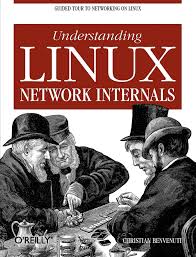Understanding Linux Network Internals: A Comprehensive Guide
Introduction
Linux, as a versatile and powerful operating system, has become the backbone of many network infrastructures. Understanding the underlying network stack is crucial for system administrators, network engineers, and developers to optimize network performance, troubleshoot issues, and secure network configurations. This white paper aims to provide a comprehensive overview of Linux network internals, covering key concepts, tools, and techniques.
Key Components of the Linux Network Stack
- Network Interface Cards (NICs):
- Physical hardware responsible for transmitting and receiving data packets.
- Configured using tools like ip and ifconfig.
- Different types: Ethernet, Wi-Fi, etc.
- Device Drivers:
- Software components that interact with NICs.
- Handle low-level operations like packet transmission and reception.
- Kernel modules that can be loaded and unloaded dynamically.
- Network Device Interface (NDI):
- Standardized interface between device drivers and the kernel network stack.
- Provides a consistent way for the kernel to interact with different network devices.
- Network Protocol Stack:
- A layered architecture that handles different aspects of network communication.
- Link Layer:
- Responsible for physical transmission of data frames.
- Protocols: Ethernet, Wi-Fi, PPP, etc.
- Network Layer:
- Handles packet routing and addressing.
- Protocols: IP (IPv4 and IPv6), ARP, ICMP.
- Transport Layer:
- Provides reliable end-to-end communication.
- Protocols: TCP, UDP.
- Application Layer:
- User-facing protocols for specific applications.
- Protocols: HTTP, FTP, SMTP, SSH, etc.
Network Configuration Tools
- ip Command:
- Powerful tool for configuring network interfaces, routing tables, and other network settings.
- Examples:
- ip addr show: Display network interface addresses
- ip route show: Display routing table
- ip link set dev eth0 up: Bring up the eth0 interface
- ifconfig Command:
- Older tool for configuring network interfaces.
- Still available for backward compatibility.
- netstat Command:
- Displays network statistics and connections.
- Examples:
- netstat -an: Show all network connections
- netstat -s: Show network statistics
- ss Command:
- More modern and efficient alternative to netstat.
- Offers similar functionality with improved performance.
Network Troubleshooting Tools
- tcpdump:
- Powerful packet capture tool for network analysis.
- Can filter packets based on various criteria.
- wireshark:
- Graphical network analyzer that provides detailed packet inspection.
- ping:
- Basic tool to test network connectivity.
- traceroute:
- Traces the path of packets to a destination host.
- mtr:
- Combines ping and traceroute for more comprehensive diagnostics.
Network Security
- Firewall:
- Protects the system from unauthorized network access.
- Linux provides tools like iptables and nftables for firewall configuration.
- Network Address Translation (NAT):
- Hides internal IP addresses from the external network.
- Virtual Private Networks (VPNs):
- Securely encrypt network traffic over public networks.
- Intrusion Detection Systems (IDS):
- Monitor network traffic for malicious activity.
Performance Tuning
- Network Interface Tuning:
- Adjust parameters like buffer sizes and interrupt handling to optimize performance.
- TCP Tuning:
- Configure TCP parameters like congestion control algorithms and window sizes.
- Offloading Network Tasks:
- Utilize hardware acceleration features of NICs to reduce CPU load.
Conclusion
Understanding the Linux network stack is essential for effective network administration and troubleshooting. By mastering the concepts and tools discussed in this white paper, you can optimize network performance, enhance security, and ensure reliable network operations.
References:
- Linux Network Administration: A Comprehensive Guide by Rusty Russell and Neil Carmichael
- The Linux Programming Interface by Michael Kerrisk
- Linux Kernel Documentation
[Include relevant diagrams and illustrations to enhance understanding]
Note: To provide a truly exhaustive white paper, consider adding more advanced topics like kernel network modules, network namespaces, and advanced network programming techniques. Additionally, explore specific use cases and real-world examples to illustrate the practical applications of the concepts discussed.



